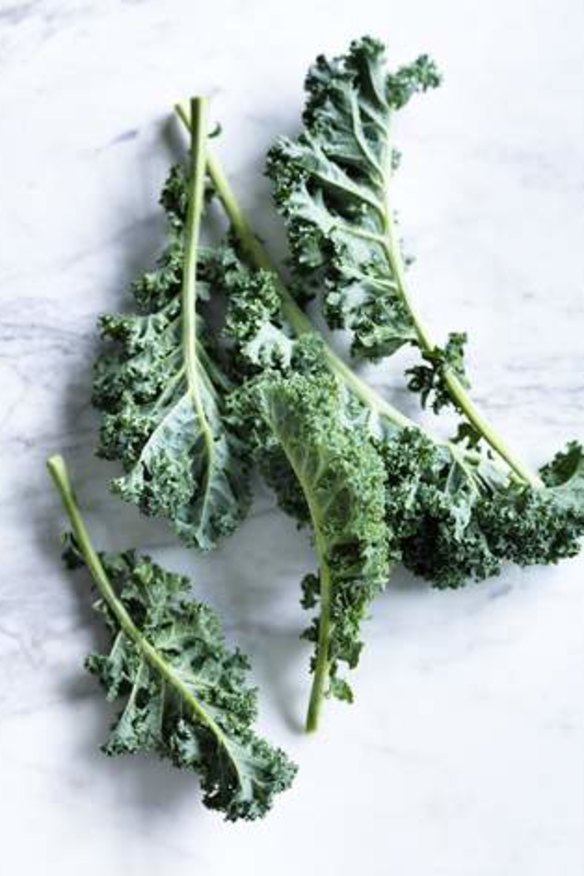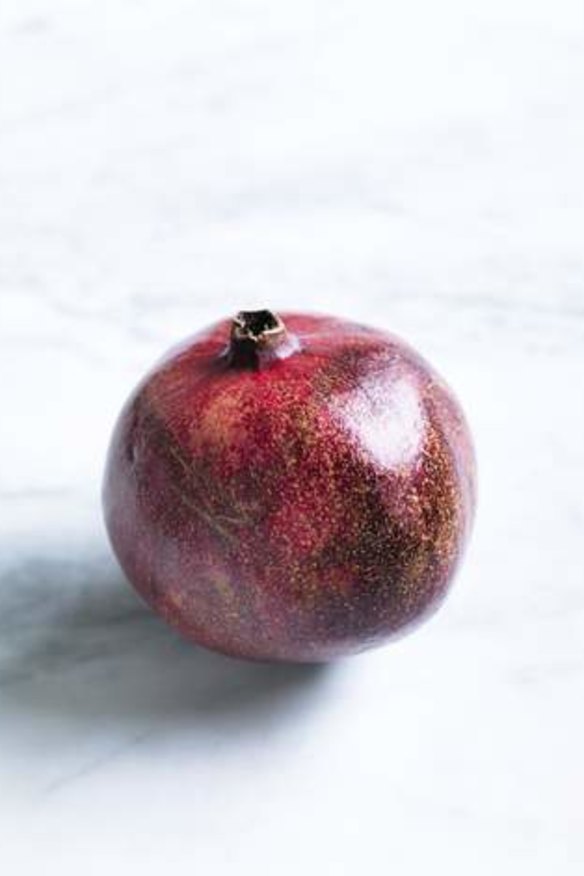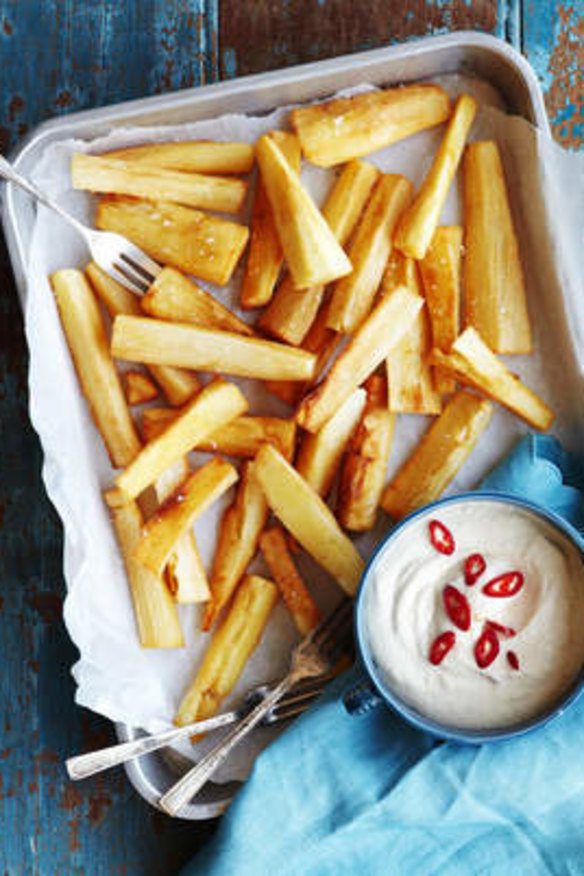17 essential ingredients
These are the items to have on your shopping list in 2014.

Food trends can sneak up on you. These days, we don't bat an eyelid when a cafe has a freekeh salad jewelled with pomegranate seeds on the menu. We nab kohlrabi at the farmers' market to make a quick, crisp salad with Saturday's lunch, and as for kale, that little veg about town, you can find it wilted as a breakfast side or flash-fried in tempura batter as an ethereal bar snack.
Maria Tsihlakis, a managing director at the Essential Ingredient, says that while there's an enduring interest in Middle Eastern flavours (who doesn't own a zeitgeisty Ottolenghi cookbook?), there's been a marked increase in enrolments for classes in old-school skills such as fermentation, brining, smoking and curing - trends that were also noted by chefs and critics, who additionally predicted swings towards Korean flavours. Ever-increasing interest in healthy eating means people are searching for health-conscious alternatives to staple ingredients, adding nutrients and flavour in a two-birds-one-stone hit.
So it's time to throw out those half-used bags of ''what the hell was that?'', wipe the pantry shelves clean of sticky rings of balsamic, and add these ingredients to your shopping list to refresh your repertoire. Kick your skills up a gear and invigorate your rotation of go-to dishes for 2014.

Fermented vegetables
This is the year's big one. They're simple to make (though you can buy them, of course), great for your gut and chockful of flavour. ''Sauerkraut and kimchi are good examples of fermented cabbage,'' Pete Evans says. ''All you need is salt and a vegetable in a sealed jar, stored at room temperature and out of light for five to 10 days, depending on the strength you want. It will bubble up with healthy lactic acid bacteria.''
While adults love its pungent flavour, it can be a harder sell to kids. He recommends serving a spoonful on the side ''with fattier things like roast chicken or avocado''. As a side note, if you make your own pickles, don't throw out the juice. ''As well as a good vinegar, I add a slurp of pickle juice [gherkin/dill/anything] to a vinaigrette,'' recommends Jill Dupleix. ''Anything that needs a lift - add pickle juice.''

Arabella Forge's sauerkraut recipe and fermented pineapple tepache soft drink recipe.
Unusual chillies
We've ridden high on the Mexican restaurant wave, but now we're bringing our favourite chillies out of the restaurant and into the pantry - no longer are we mystified by these strange, leathery heat bombs and meekly deferring to a little dash of Tabasco. The Age Good Food Guide co-editor Roslyn Grundy is mad for smoky chipotles, both in dried form and in cans of adobo sauce, while restaurant critic Terry Durack enjoys ''padron peppers, which are currently being grown in northern New South Wales and Queensland. They're known as roulette peppers because only one in 10 is hot and spicy. But which one? Just sizzle them up in a hot pan and serve with fried eggs or chorizo sausage, or toss them into a tomato salsa. Great, if a bit scary, for breakfast.'' Check out midyimeco.com.au for fresh ones and guacamalle.com for dried.
Native pepperberries
In keeping the spice to a homegrown nature, food writer Jill Dupleix suggests using native pepperberries. ''They're like slightly softer peppercorns, even though they are not, they're just dried berries. But they pack a brilliant, pungent, peppery, astringent punch - very addictive. I use them for pepper steaks, in dips and relishes, gravies, and for my 'bush gravlax', a cure for ocean trout using native ingredients.'' Get them, and other native herbs and spices, at bushtuckershop.com.
Coconut oil
This is another item that's gaining popularity, not only for its flavour but for its health benefits. ''Coconut oil has an impressive fatty acid profile and can help modulate good and bad cholesterol ratios,'' says the Staple Store's Catie Gett. ''Coconut has a high smoking temperature, which means it can be heated to high temperatures before it oxidises, making it a great option for cooking with.'' She suggests adding coconut oil to pumpkin soup, using it to pop black rice for salads, or infusing it with turmeric, lemon zest, garlic and hard herbs ready for cooking.
Pomegranates
National food and wine editor Ardyn Bernoth rates the versatility of the charismatic pomegranate, easily found in supermarkets now, as a shopping list must. ''I love everything about them … that you get to give them a sound thwacking with a wooden spoon to release their crimson seeds and that they look like jewels, but have a complex tart tang to them. My favourite salad of summer has been inspired by Ottolenghi [who else?] - chopped tomatoes of every colour and size with red onion and capsicum, a dressing of red wine vinegar and olive oil finished with a glimmering shower of pomegranate seeds.''
Freekeh
Last year we all got to grips with quinoa. This year it's time to embrace freekeh. Of Middle Eastern origin, it's a highly nutritious, easily prepared roasted green wheat grain with a lovely nutty flavour. Maggie Beer makes a warm freekeh salad with preserved lemon, ricotta and mint, while the menu at George Calombaris' Hellenic Republic features a Cypriot grain salad with freekeh, lentils, seeds, nuts and herbs, topped with yoghurt and pomegranate seeds.
Kale
This dark-green vegetable, with its leaves frilled like coral, is popping up all over the place, popular for its nutritional value and versatility. You can braise it and have it as a breakfast side, put it through soups, bake it like a gratin, swirl it through pasta and even season and roast torn leaves for a healthy alternative to potato chips. Casey McDonald, chef from Cumulus Inc and Cumulus Up, says: ''One of our most popular dishes is our kale fritters. The leaves have the thickness to hold the batter and can withstand the heat of frying. To prepare, we wash and dry the kale, and soak it in a rice flour batter and then fry the leaves.''
Cassava
Ben Milgate and Elvis Abrahanowicz (Porteno, Bodega, Gardel's Bar) are predicting a rising interest in dishes using cassava, a root vegetable especially popular in Central and South America. ''We love how versatile it is; it can be used for sweet or savoury. We have it on our menu as yucca frita [chips] with Huancaina sauce [a South American sauce made of chilli, Sao biscuits and feta], and we finish it off with a fried egg on top.'' You can also grate it into meatballs and use cassava flour in baking. Available from Newtown's Fiji Market and Melbourne's Footscray Market.
Seaweed
There are many types of seaweed - nori, wakame, kombu - and they're a great go-to for adding texture and umami. MoVida's Frank Camorra recommends reconstituting your favourite, tearing it and adding it to salads, or enhancing a seafood pasta sauce with powdered kombu.
Gochujang paste
Korean cuisine may be about to have its long-awaited time in the sun, but Rockpool's Neil Perry has been on board for ages and recommends keeping a jar of gochujang paste (fermented chilli bean paste) to hand (you'll find two of his recipes in the gallery above). ''Just mix with sesame oil and a little sugar and it makes a sensational dressing for oysters and seafood. Used in a stir-fry, it makes an amazing flavour and goes perfectly with chicken, seafood and pork. I also love a small spoonful in dressings for salads.'' Find it at Asian grocers.
Instant noodles
Stay with us on this one. Dan Hong (Ms.G's, El Loco and Mr Wong) says they've come a long way in recent times, and he keeps a stash of Nongshim kimchi ramen in his pantry for a quick feed after a long shift. They're reduced sodium, MSG-free, in a recyclable bowl, and he says they taste like the real thing. He recommends having them as a snack with a few pork rinds on top (some soak up the soup, others stay pleasingly crisp), or throw in a few fresh vegetables, maybe some shallots, and serve with kimchi on the side. Available at Asian grocers.
Dried Chinese sausage
Terry Durack loves the convenience and strength of flavour of Chinese lap cheong sausage. ''I always keep a pack in the fridge; I love the sweet porkiness it brings, not just to Chinese dishes and stir-fries, but just steamed, sliced and sizzled for 10 seconds in a hot pan then tossed over fish and rice for a quirky surf-and-turf effect. Dinner is done.''
- Brain food: Is it safe to freeze leftover lap cheong sausages? If so, for how long?
Buckwheat flour
Frugavore's Arabella Forge suggests stocking buckwheat flour - a pseudo-cereal grain from the same family as sorrel and rhubarb - especially if you're following a gluten-free diet. ''Its nutty, tangy flavour adds a delicious base for cakes and biscuits. You can buy it as a ready-to-use flour, or buy the grouts and grind it yourself for a fresher flavour. Buckwheat grouts can also be sprouted and roasted, then cooked in a light broth to make traditional buckwheat porridge.'' It's also great for making blinis and Normandy-style crepes.
Beyond balsamic vinegars
Expanding your repertoire of vinegars can unlock many new culinary tricks and recipes. Epicure's Simone Egger is a fan of the naturally fermented Bragg Organic Apple Cider Vinegar, as it is both health-promoting and a starter for all sorts of fermenting, while food writer Jill Dupleix recommends LiraH Oak Aged Shiraz Vinegar. ''Soak a couple of tablespoons of currants in red wine vinegar for an hour or so before dinner. Drain and use the vinegar with olive oil to dress a leaf salad, and scatter with the currants - little bliss bombs of sweetness and acidity.''
Pomegranate molasses
Middle Eastern flavours are still popular and Karen Martini loves the enduring versatility of pomegranate molasses for both savoury and sweet dishes, from meatloaf to coffee cake. ''It has such a concentration of flavour, as well as an amazing sweet and sour balance; it enriches dishes and freshens them at the same time. Recently I made a meatloaf with haloumi, pistachios and oregano, and glazed the top with some pomegranate molasses, which gave it such a deliciously sweet and sharp accent. I do an exotic version of Eton mess with Persian fairy floss and cubes of pomegranate molasses and cranberry jelly. I also make a Dan Lepard-inspired spiced coffee and date loaf, which I skewer holes in and drench with pomegranate molasses while it cools, which makes it extra-moist.''
Dukkah
While this Egyptian dry mix is not unusual now, as Jill Dupleix says, ''its lovely, spicy, sesame-seedy goodness is coming back, but used in new ways - brilliant scattered over fried eggs, shakshouka, leafy green salads, soups, roast vegies, and swirled into yoghurt and smashed feta to serve next to grilled fish, chicken, lamb, or as a crust for oven-baked fish.''
Time
With our growing interest in creating culinary things on the home front, perhaps the most vital ingredient we should be stockpiling is time - time to experiment, time to explore markets and unusual suppliers, time to hone new skills and get creative. When asked what his essential ingredient for 2014 would be, Attica's Ben Shewry said what many other chefs would like, too: ''To be honest, the ingredient I'll be hoping for the most this year will be time.''
Have you added a new ingredient to your shopping list recently? Use the comment function below to share your favourite new ingredient and how you're cooking with it.
Restaurant reviews, news and the hottest openings served to your inbox.
Sign up